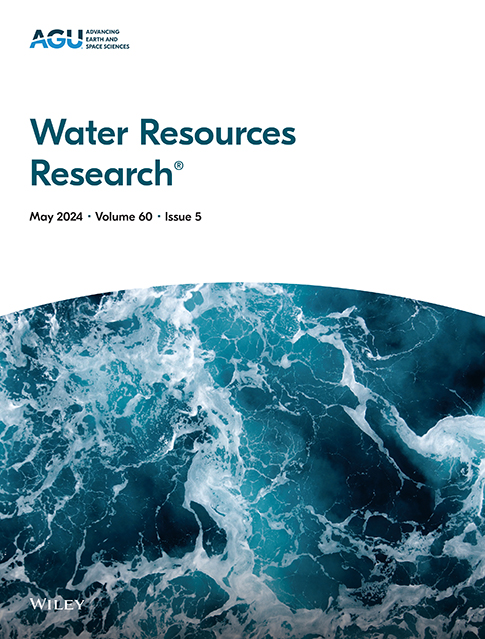A Distributed Machine Learning Model for Blue and Green Water Resources With Transferable Applications in Similar Climatic Zones
IF 5
1区 地球科学
Q2 ENVIRONMENTAL SCIENCES
引用次数: 0
Abstract
Human activities profoundly impact the terrestrial water cycle and the spatiotemporal dynamics of blue and green water resources. Distributed hydrological models are essential for simulating the water resources within a basin. However, neither process-based nor data-driven hydrological models have fully captured the effects of human activities on the distribution of blue and green water resources in space and time. Here we construct a distributed machine learning model for monthly blue and green water resources, which is trained and calibrated for the Yellow River Basin (YRB) in China, and validated and tested for the transferability to similar climatic zones in the case for Colorado River Basin (CRB) in the United States. The modeling thoroughly accounts for the influence of human activities, incorporating 5 scales (grid, county, city, province, and cluster), 4 algorithms, and 2 model integration methods (Stacking and Bayesian). The R2 values reached 0.84 and 0.97 for blue and green water models, respectively, during the test period in the YRB. The corresponding high modeling accuracy maintained with R2 values of 0.72 and 0.97 when transferred to the CRB. The model performed better in regions with higher human activity intensity. Precipitation and spatial encoding are respectively the most sensitive feature variables for the green water and blue water models, while nighttime lights and population density are respectively the most significant human activity-related features. The study highlights the non-negligible impacts of socioeconomic factors on spatiotemporal dynamics of blue and green water resources, and the feasibility of machine learning modeling.相似气候带蓝绿水资源可转移应用的分布式机器学习模型
人类活动深刻影响着陆地水循环和蓝绿水资源的时空动态。分布式水文模型对于模拟流域内的水资源是必不可少的。然而,无论是基于过程的还是数据驱动的水文模型,都没有充分反映人类活动对蓝色和绿色水资源在空间和时间上的分布的影响。本文构建了每月蓝绿水资源的分布式机器学习模型,并针对中国黄河流域(YRB)进行了训练和校准,并以美国科罗拉多河流域(CRB)为例验证和测试了该模型对类似气气带的可转移性。该模型充分考虑了人类活动的影响,包含5个尺度(网格、县、市、省、聚类)、4种算法和2种模型集成方法(Stacking和Bayesian)。在长江三角洲试验期间,蓝水模型和绿水模型的R2分别达到0.84和0.97。传递到CRB后,相应的建模精度保持较高,R2值分别为0.72和0.97。该模型在人类活动强度较高的地区表现较好。降水和空间编码分别是绿水和蓝水模式最敏感的特征变量,而夜间灯光和人口密度分别是人类活动相关的最显著特征。研究强调了社会经济因素对蓝绿水资源时空动态的不可忽视的影响,以及机器学习建模的可行性。
本文章由计算机程序翻译,如有差异,请以英文原文为准。
求助全文
约1分钟内获得全文
求助全文
来源期刊

Water Resources Research
环境科学-湖沼学
CiteScore
8.80
自引率
13.00%
发文量
599
审稿时长
3.5 months
期刊介绍:
Water Resources Research (WRR) is an interdisciplinary journal that focuses on hydrology and water resources. It publishes original research in the natural and social sciences of water. It emphasizes the role of water in the Earth system, including physical, chemical, biological, and ecological processes in water resources research and management, including social, policy, and public health implications. It encompasses observational, experimental, theoretical, analytical, numerical, and data-driven approaches that advance the science of water and its management. Submissions are evaluated for their novelty, accuracy, significance, and broader implications of the findings.
 求助内容:
求助内容: 应助结果提醒方式:
应助结果提醒方式:


